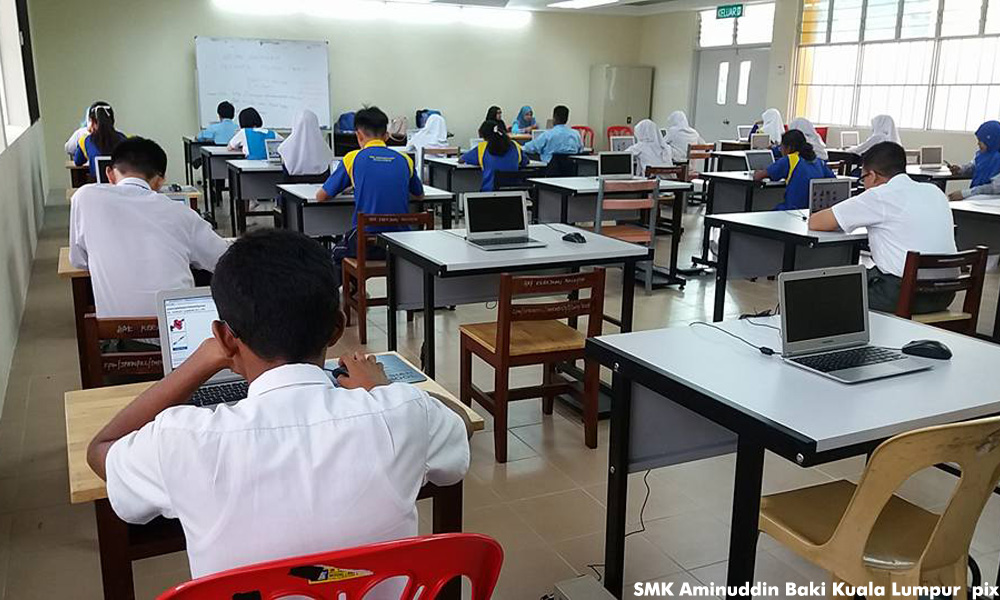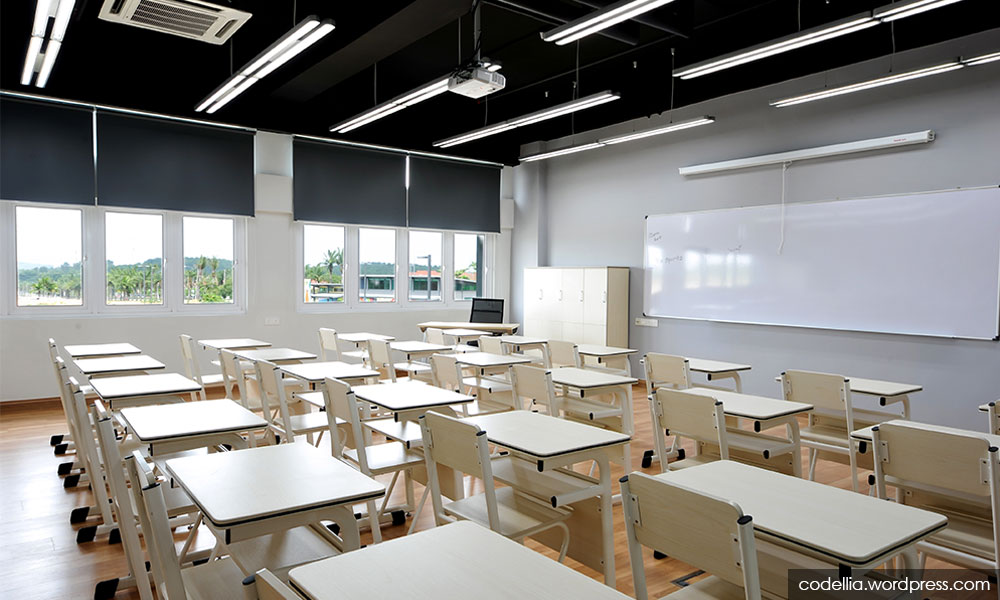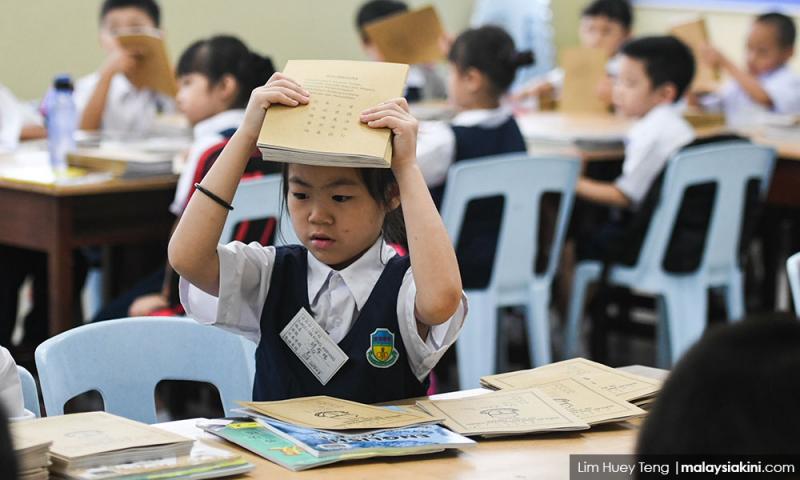The task before the new minister for education
COMMENT | To say that the education system in our country is broken will be an understatement. This is quite apparent to anyone who has been in the system for some time. I began my teaching career in the colonial days in 1955 and since then have remained in the system in different capacities and roles for the greater part of my working life. My personal engagement with the education system then and now provides the basis for my observations and suggestions that follow.
Our education system is broken. To argue otherwise will be political, not educational. The system cannot be fixed without political will. This is not easy because stakeholders have taken firm positions on what ails the system and how to fix it. Perhaps there is a window of opportunity now with Dr Mahathir Mohamad taking over the job as acting minister of education. Now there is power and authority to push through fundamental changes to the system. This does not mean the minister has a clean slate and is free to do what he likes. He still has to operate within the constraints in the system, constraints that have grown over the years.
For example, to talk about abolishing vernacular schools is a non-starter. Sure, we can make them better but not abolish them. Also, there is no need. They have a role in the education system, given the plurality of Malaysian society and its historical roots. A one-school system does not guarantee national unity. The school system is not a panacea for all problems in our society. The solutions to many of these problems lie outside the school system in better policies, institutions, laws, and mindsets.

In fact, a one-school system in the present environment can compound existing social problems, not alleviate them. The opportunity for a one-school system is well past. Any forced move in this direction now will be dysfunctional. The wiser approach will be to better manage the existing system, which is not without merits.
A fundamental problem with the present school system is the quality and type of education provided. Both quality and content need serious review. If we use output measures, especially comparative data from more progressive education systems, our schools are churning out “graduates” who neither meet educational goals nor market needs. The system must produce people who are schooled to meet quality standards (these standards must be internationally comparable) in the respective areas of study. A science student must demonstrate mastery of science and mathematics at the appropriate level. Similarly, for students in the humanities, TVET, and other disciplines.
These levels of performance must be rigidly enforced. There must not be lowering of standards. For example, when the passing mark for additional mathematics is lowered because many failed the subject. We cannot keep shifting the goalposts for reasons of public consumption. The wavering commitment to quality, if not checked, will continue to produce outputs that are not fit for higher education or the labour market.

Quality in the school system is largely a function of three things – facilities, teachers and content. In terms of facilities, by and large, national schools today are well-equipped. There is constant upgrading of facilities, like providing information technology resources. So, the problem does not lie here. Teachers and content are the areas we need to concentrate on.
The general quality of teachers today, if compared to the 1950s and 1960s, is poor. Part of the problem is recruitment. In the colonial period and just after independence, it was difficult to become a teacher. Recruitment was selective. Many who could not get into teaching went into other jobs. It is difficult to train people who are not trainable. There is teacher training today but you are talking about people who should not be in teaching in the first place. Teaching is more than a job. Unless you have the right kind of person in the classroom, students will suffer. This is what is happening today.
Teaching requires more than academic credentials, although that is important. Teaching is about values and beliefs that you pass on to your students. This is critically important if national schools are to become schools for all. Non-Malays chose to stay away from national schools because they fear teachers in national schools, who are predominantly Malay and Muslim, will pass on Islamic values and beliefs to their children. The poor quality of education in national schools is not the primary reason why non-Malays stay away. The primary reason is fear of Islamisation. Parents fear their children will come under Islamic influence. So, they send their children to their own schools. Whether the fear is grounded or not is not relevant. What counts is perception.

The fact that the administration of national schools is in the hands of Malay and Muslim heads is not reassuring. We need to make the teaching service not only better in terms of quality but also more secular and more representative of the different ethnic groups in the country. In short, keep race and religion out of the school. This does not mean religion and spiritual values are not important. They are. But the school is not the right vehicle for religious education in a multi-religious and multicultural society like ours.
This was not the situation in the colonial period. The national/government schools then had teachers who were largely non-Malay and non-Muslim. The school environment was secular. Religion had no role in the school curriculum. Religious classes, if any, were held after school hours. It is true there was fear among Malays then. Many Malays did not want to send their children to government schools because they feared their children will become Christians. Slowly their attitude changed because they saw the value of an English education.
Also, the threat of Christianisation proved to be not real as the schools were secular. Today, unlike then, the non-Malays do not see any educational value in sending their children to national schools. On the contrary, they see national schools as embedded in Islam and Islamic values which they fear their children will assimilate. They see national schools as less and less secular.

Content is an important component of quality in education. What we teach in national schools, both primary and secondary, is an important determinant of the level of knowledge and skill the student will have when he leaves the system. Again, when we compare with the past, what we teach today is narrow in scope and coverage. I remember teaching world history to Form 3 students in the 1960s. This kind of breadth is not in the curriculum today. Sure, we need an emphasis on Malaysia.
But the point I am making is that the school curriculum must include a broad understanding of the world - be it physical, social, economic or science. Without this, the school system cannot prepare students for either further education or employment. Schools have a responsibility to prepare our young for life outside the school. Malaysia is not the world. A parochial approach to education is no preparation for life in a globalised world.
Within a broad education, the curriculum needs to focus on areas of study that are and will be in demand. Here I’m talking about Stem courses. Science, technology, engineering and mathematics are critical knowledge areas for future industries. Given the Industrial Revolution 4.0 and 5G and future developments in these areas, science and maths will become increasingly important. It is crucial our schools provide a solid foundation to our students in these disciplines on which they can subsequently build their future careers. At present, our schools are behind global benchmarks in Stem. This has to be reversed if we are to become globally competitive.

Resources have to be allocated to better teaching of courses related to Stem. Teachers have to be retrained and upgraded. A more open policy to recruiting science and maths teachers is required. It is a fact that in the past, the iconic teachers in science and maths were non-Malays. There is nothing racial about recruiting non-Malay specialists to teach science and maths. Such teachers can be given special incentives to attract and retain them.
The question of what language to use to teach Stem courses has been politicised. These courses can be taught in any language, provided the language is developed enough to handle technical content. Another consideration is access to the growing body of knowledge in Stem. The reason why many countries have opted to teach Stem courses in English is the fact that the English language provides, perhaps, the best medium to access technical knowledge. Much of the research in the scientific field is in English. Without English, you cannot access or contribute to this pool of knowledge. The countries that use English have a rich language of their own but yet they have opted to teach maths, science and other courses in English so that their graduates can become the best in the world. There is nothing racial or nationalistic about it. It is a pragmatic, educational decision.
If we in Malaysia want our STEM graduates to be globally competent and work anywhere, we have to be rational. Malaysia is a small country. We cannot afford to be parochial. We need to think global and benchmark ourselves against the best in the world. Using English as the medium will give us the lever. The transition to teaching maths and science in English has to be carefully planned and implemented though. This is because of the level of English among our teachers and students, especially in rural areas. This calls for a comprehensive set of measures to deal with the challenge. But it can be done. The real problem is the will to do it. When the medium of instruction in our schools was changed from English to Malay in 1970, there were problems. But it was done.

Apart from teaching Stem courses in English, there is the larger issue of the declining standard of English in our school system, both in the national and vernacular schools. This trend continues at the tertiary level in colleges and universities. The problem has to be addressed. With the level of English competency our students have, they simply cannot compete internationally with students from Singapore and elsewhere coming from English-medium schools. The option to convert our schools to English medium is not realistic at this point. But we can narrow the gap if we go about it seriously.
To start, we can increase the time alloted to teaching English. English should be considered a priority subject. If not comparable to Malay, at least as important. English teachers should be specially trained to deliver the subject matter and must be competent themselves. There is much material available on teaching English as a second language. This should be utilised. I would suggest creating a Language Unit in every school that will serve as a resource centre for the teaching of languages, with particular emphasis on Malay and English. The Language Unit should be headed by language specialists in Malay and English. There should be a similar structure at the ministry level that will provide expertise and resources to the language units at the school level.
The language unit at the ministry level should be staffed by language experts in Malay and English. I would suggest employing experts from language houses (local and overseas) that specialise in language teaching. Informal and ad hoc measures to improve language teaching will not work. The process has to be formalised and structured at the ministry and school level. This calls for a long-term commitment to improving English (and Malay) in our schools. In time, we can move to make passing English mandatory in SPM, as was in the colonial schools for the School Certificate. We cannot do this now with the level of English among our teachers and students.

I have identified what I consider are the critical issues facing our schools (I have not included discussion of tertiary education here). These issues must be addressed if national schools at the primary and secondary level are to regain the confidence of all communities in Malaysia. Otherwise, non-Malay parents and even Malay parents will continue to seek alternatives for their children. If they send their children to national schools it will be because they have no choice. Those who have money will send them to international schools here or overseas. National schools will never become the preferred schools.
This will lead to more segregation, not integration. The national schools will not provide the kind of integration the colonial schools did. The good news is, most parents, especially the Chinese, are pragmatic. They want a good education for their children. They will shift to national schools if the schools provide a better education and future for their children. To provide such an education is the task of the new minister of education.
I LOURDESAMY is an educationist.
The views expressed here are those of the author/contributor and do not necessarily represent the views of Malaysiakini.
RM12.50 / month
- Unlimited access to award-winning journalism
- Comment and share your opinions on all our articles
- Gift interesting stories to your friends
- Tax deductable
